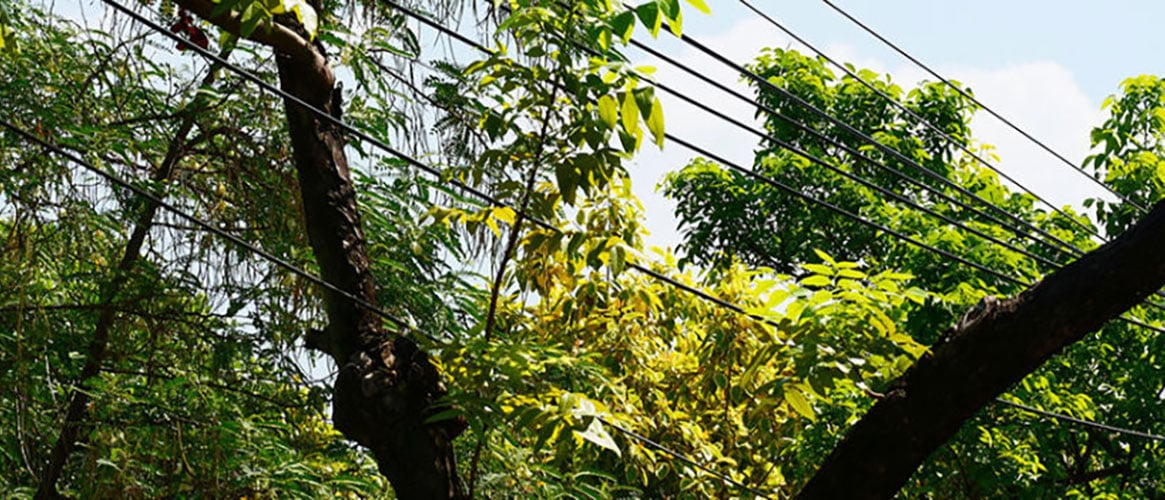Trees and power lines are a dangerous combination. This is most evident in when heavy rains saturate California, causing large trees to fall and in some cases take down nearby power lines. The potential for power outages is just one problem to be concerned about. Since trees conduct electricity to the ground, simply growing into power lines creates an additional public safety hazard.
To manage these dangers, utility companies either employ or contract with workers to trim or even remove these trees. This means a job site where your workers are also in close proximity to power lines, and must take extreme caution while on the job.
Unlike the power lines in our homes or businesses, the overhead variety are not covered with insulation. Directly touching a power line or contacting an object that is touching the line can lead to serious injury or death from electrocution.
What your employees need to know about overhead power lines
Always presume power lines are live and operating at the highest possible voltage. With this in mind, your workers also must be aware of the following:
- In addition to trees and branches, tools and equipment can conduct electricity from the power line to you and to the ground.
- Power lines can arc – which means, in the right conditions, an object like a tree doesn’t have to actually touch the power line to conduct electricity.
- Workers, tools, and equipment must be at least 10 feet from power lines.
- Only specially trained workers may perform duties inside the 10 foot zone, or if branches are in contact with power lines. These workers must also use insulated tools and personal protective equipment.
What your employees need to do when working near overhead power lines
Start each work day with a pre-job meeting to discuss the hazards and develop a plan for mitigating them:
- Look for hidden power lines near trees or buildings.
- Have the tools and personal protective equipment for the job, including proper fall protection.
- Never approach a person who appears to have been electrocuted; call 911 immediately and keep others away. The victim and the ground around them may still be energized.
- If a worker is in a vehicle that is struck by a power line, that worker must stay inside and remain calm until help arrives, unless the car catches fire.
What to cover at your safety meeting about overhead power lines
Training and the use of proper tools/equipment are essential in protecting your employees against the hazards of power lines. Through handouts, videos, and other demonstrations, you can provide some good examples of the dangers they face, and why they should never trade convenience for safety.
- Discuss with your employees how to locate power lines and remind them to stay at least 10 feet away.
- Remind them to always presume a power line is energized and not to touch it or any objects in contact with the line.
- Discuss how tools and equipment conduct electricity and remind your workers of the dangers of arcing power lines.
- Review your emergency action plan.
- Have a Q & A component where workers ask questions or express any concerns about the task at hand.
Outdoor electricity lines pack a powerful punch. When you work with your employees and promote safe work practices, you can avoid serious or catastrophic injury. Not only is the jobsite safe, so is the surrounding community.
Trees and power lines may be a dangerous combination, but they can peacefully co-exist with proper and ongoing maintenance.

